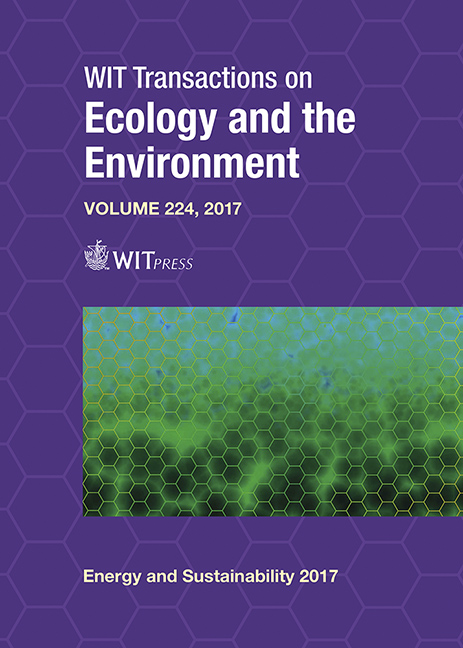PILOT-SCALE THERMAL TREATMENT OF AUTOMOTIVE SHREDDER RESIDUE: PYROLYSIS CHAR IS A RESOURCE OR WASTE
Price
Free (open access)
Transaction
Volume
224
Pages
12
Page Range
439 - 450
Published
2017
Paper DOI
10.2495/ESUS170411
Copyright
WIT Press
Author(s)
ALA KHODIER, KARL S. WILLIAMS, NEIL DALLISON
Abstract
One of the major challenges facing the automotive industry is meeting the recycling and recovery targets set by the revised European End-of-life Vehicles directive (which has set a target of 95wt% for recovery from vehicles by 2015). End-of-life vehicles are shredded and the metal content is recovered (typically 75–80wt%). The remaining non-recovered material is 20–25wt% (shredder residue). It is this material which must be processed to meet the higher targets. Currently, the residue is disposed of cheaply, which in many cases is landfill. The option to recover material to meet the target is currently limited to mechanical sorting via post-shredder technologies. This is making it difficult to fully implement the requirements of the directive and the future application of the circular economy package. This paper considers the role of advanced thermal processing of shredder residue, which produces gas and oil products that contribute to the EU target. However, to fully meet the targets the authors believe that the char residue is a crucial element. This study presents the results of investigations into the char characteristics from thermal treatment at a pilot-scale rotary kiln at 800–1000°C. The composition of the char and its calorific value were determined and the critical factors on processing char and its subsequent use are presented. The results of these analyses suggest that thermal treatment may represent a viable process for shredder residue and with the char contribute to meeting the EU targets. The char comprises carbon and hydrocarbons and therefore, any secondary use must be benign within the environment and/or beneficial in secondary waste to energy technology. The paper has demonstrated that subsequent screening of the char and secondary processing will fulfill the EU target.
Keywords
end-of-life vehicles, automotive shredder residue, ASR, char, waste to energy, thermal treatment, pyrolysis, energy recovery





